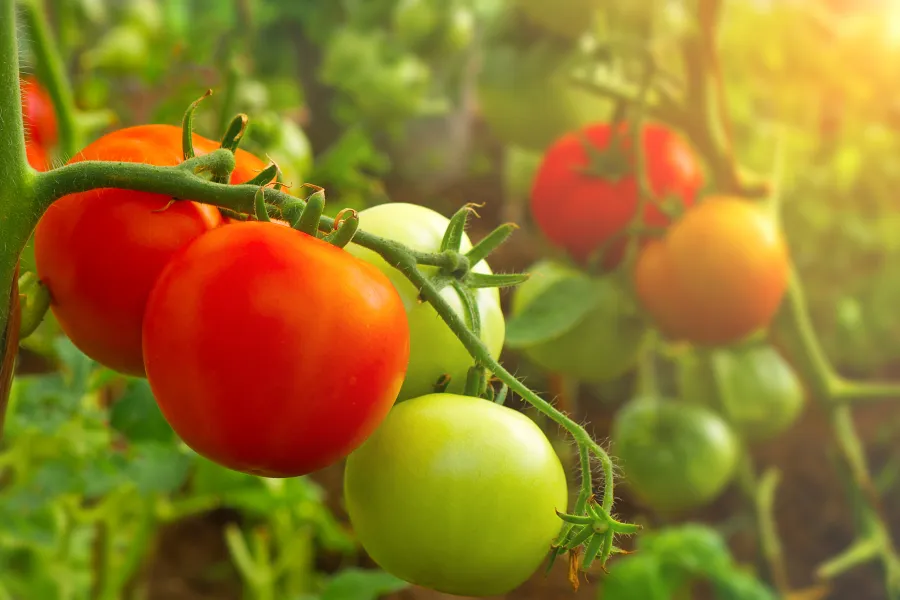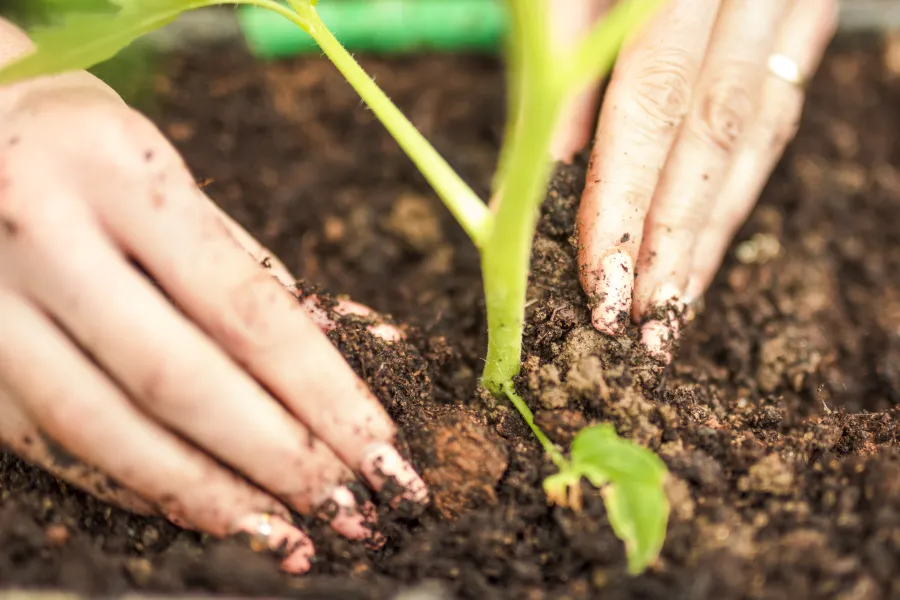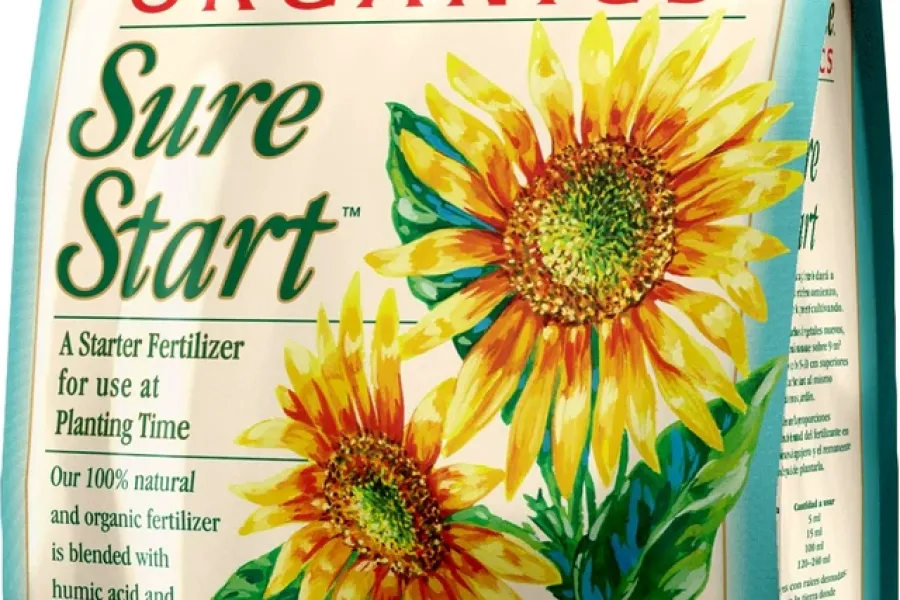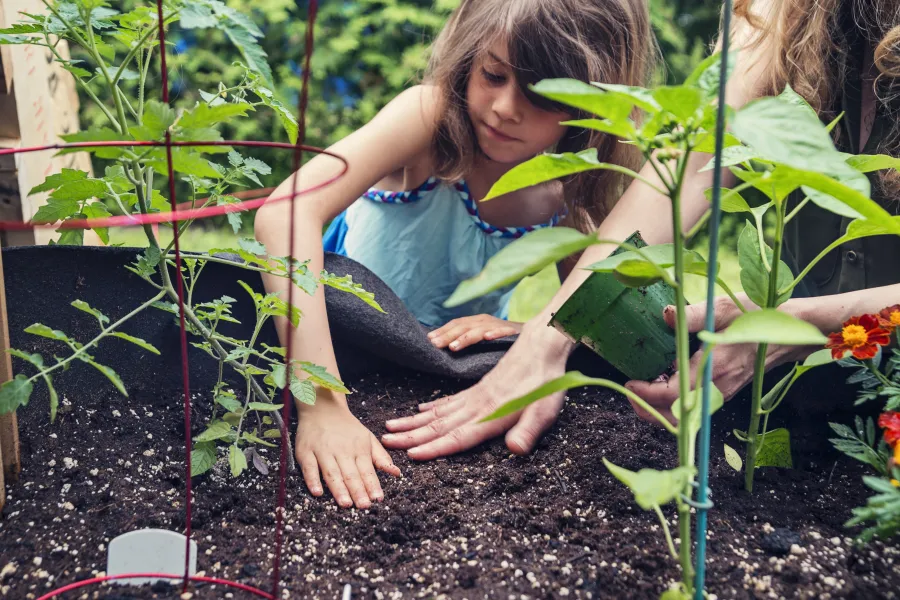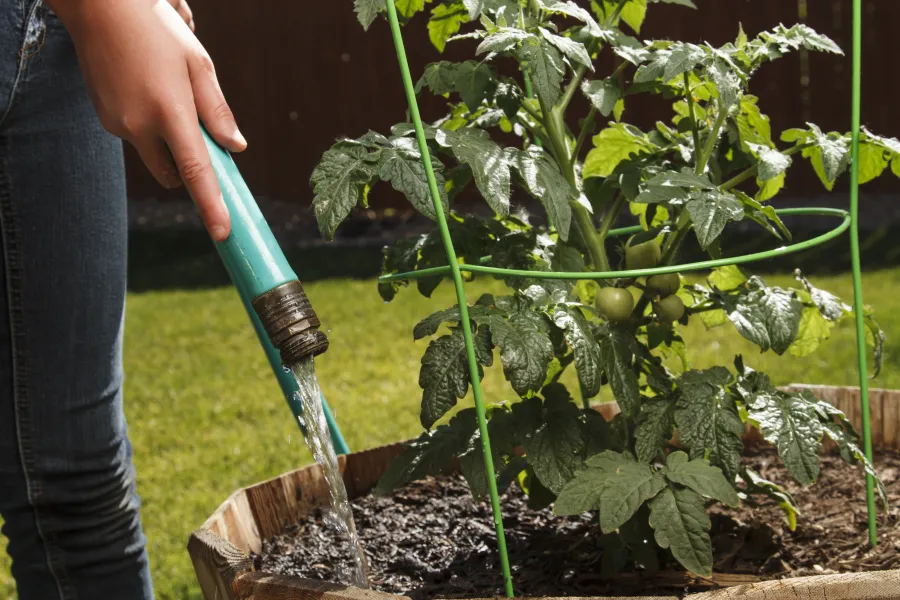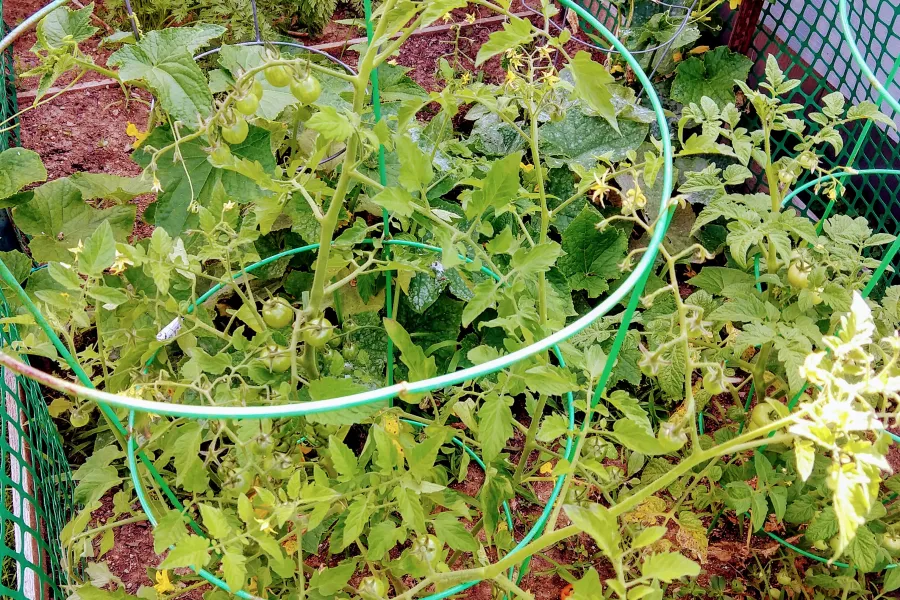
How-To
Plant Tomatoes in the Garden
How to Plant Tomatoes in the Garden
Tomatoes are a warm-season garden favorite that should be planted in spring or even into summer; there are even varieties that can be planted in early fall. Planting tomatoes is easy and will reward you with a bountiful harvest. Plant a variety of tomatoes, each with their own flavor profile, to use in homemade meals now or can for the future.
Nearly all plants should be planted at the depth of their nursery container, However, tomatoes are unique and are one of the few plants that can generate roots from their stem. Plant your tomatoes deep so they can have a robust root system for a healthy, strong plant that will produce more fruit. Remove the bottom set of leaves and plant your tomato deep enough so the soil comes just above where the leaves were removed. Tomato plants grow quite large, 4 to 8 feet tall, so most tomatoes should be planted about 3 feet apart.
Caring for Tomato Plants

Water is Key
Keep your tomatoes consistently watered. In the heat of summer, when the root masses are large and established, they may need water daily. Be sure to water in the morning between 5am-9am. Water at the base of the plant. Do not top water the leaves.
Feed Your Tomatoes
Tomatoes are heavy feeders, so frequent fertilization will ensure a strong plant that produces tons of sweet fruit. Feed tomato plants with an organic fertilizer like E.B Stone fertilizer. This is a people and pet-safe, granular organic fertilizer that should be applied every 3-4 weeks for healthy, vigorous tomato plants. After 6 weeks, add another handful of Gypsum or Bone meal. When feeding, scatter the fertilizer over the top of the soil and work it in with your fingers, then give it a good deep watering.

Harvest Time
Allow tomatoes to fully color and ripen on the vine. To pick, use a small scissors or hand pruners to cut them and cut at the stem.


